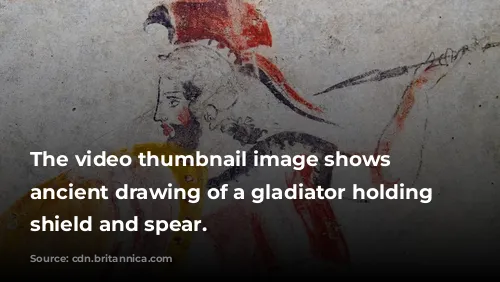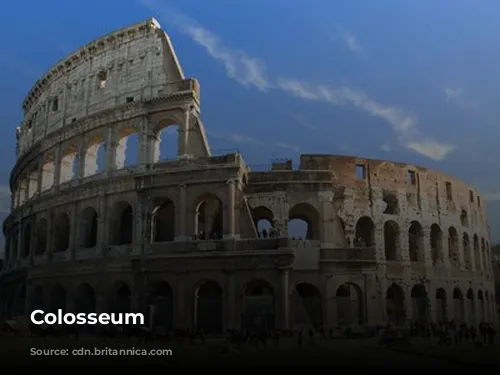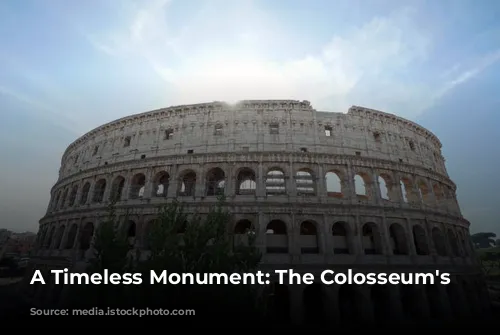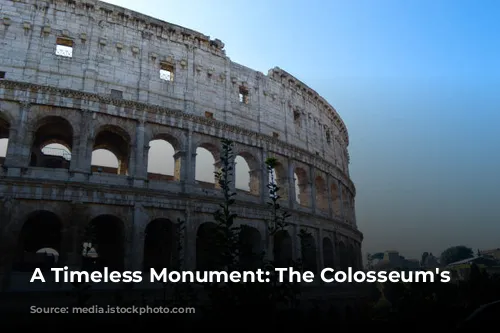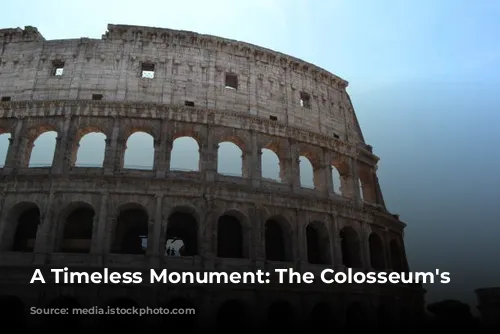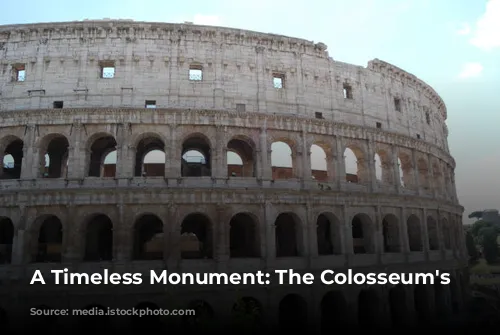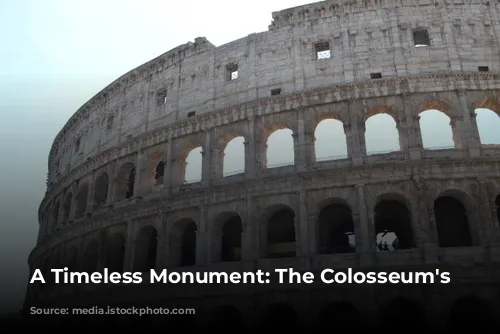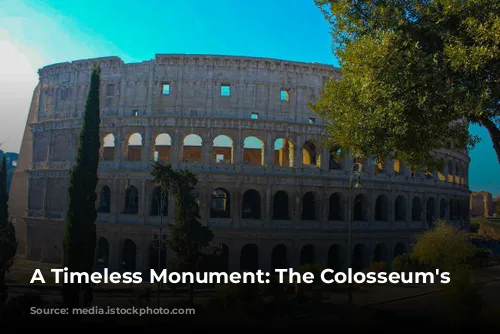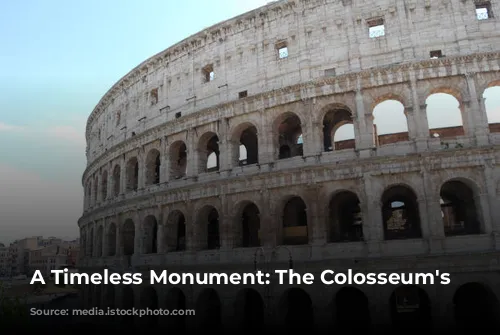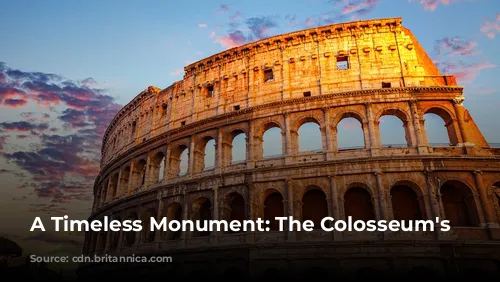The Colosseum, a majestic testament to Roman architectural brilliance, stands as one of the few remaining relatively intact structures from the mighty Roman Empire. Beyond its awe-inspiring presence, the Colosseum plays a critical role in the Italian economy, attracting hordes of tourists and generating significant income for the Italian government. In 2018, the Colosseum, Roman Forum, and Palatine Hill collectively drew in over $63.3 million (€53.8 million), making it the most profitable tourist destination in Italy.
A Monument’s Rise and Fall
The Colosseum’s journey has been one of both grandeur and neglect. Following the fall of the Western Roman Empire, this once magnificent structure fell into disrepair, its glory fading with time. The 12th century saw the Frangipane and Annibaldi families repurpose the arena as their fortress, transforming its original purpose into a symbol of their power. Later, in the late 15th century, Pope Alexander VI allowed the Colosseum to be plundered for its materials, its once-pristine stone being used as a quarry. This period of neglect lasted over a thousand years, until state-funded restoration efforts began in the 1990s, marking a turning point in the Colosseum’s fate.
A Legacy of Entertainment and Imperial Power
The Colosseum’s construction was driven by the Roman Emperor Vespasian’s desire to revitalize Rome after the chaotic year of the four emperors (69 CE). Like other amphitheaters of its time, Vespasian envisioned the Colosseum as a grand stage for public entertainment, a place to showcase gladiatorial combat, thrilling animal hunts, and even simulated naval battles. This vision reflected a desire to maintain control and appease the Roman populace, showcasing the emperor’s power and providing a source of entertainment and diversion for the masses.
A Legacy Built on Plunder and Slavery
Construction of the Colosseum began under Emperor Vespasian between 70 and 72 CE, with the completed structure being dedicated in 80 CE by his son and successor, Titus. The Colosseum’s fourth story was added by Emperor Domitian in 82 CE. This impressive structure, however, was built with plundered wealth and the forced labor of enslaved people. The funding for the Colosseum came directly from the spoils of war, specifically from Titus’s conquest of Jerusalem in 70 CE. Sadly, the construction relied heavily on the forced labor of Jewish captives from Judaea, highlighting the harsh realities of Roman imperial power.
A Colossal Structure: Engineering and Design
The Colosseum, also known as the Flavian Amphitheatre, is an elliptical structure made from stone, concrete, and tuff, rising four stories high at its apex. Measuring an impressive 620 by 513 feet (189 by 156 meters), the Colosseum could accommodate a staggering 50,000 spectators, a testament to Roman engineering prowess and their understanding of large-scale construction. The Colosseum was designed to host gladiatorial combat, a popular form of entertainment in ancient Rome, and was a symbol of Roman strength and dominance.
A Monument to Imperial Ambition
The Colosseum’s location itself was a deliberate act of symbolism. Built just east of the Palatine Hill, on the site of Nero’s Golden House, it replaced the artificial lake that was the centerpiece of that extravagant palace. Vespasian, whose rise to power began humbly, chose to replace the tyrannical emperor’s private lake with a public amphitheater, highlighting his commitment to the people and their entertainment. This symbolic gesture demonstrated Vespasian’s desire to distance himself from Nero’s extravagance and establish a more popular and accessible form of rulership.
A Legacy of Construction and Design
Unlike earlier amphitheaters, which were often built into hillsides for structural support, the Colosseum stands as a freestanding masterpiece of stone and concrete. Its construction involved a complex system of barrel vaults and groin vaults, showcasing the ingenuity and skill of Roman architects. The Colosseum boasts three levels of arcades, each framed by engaged columns in the Doric, Ionic, and Corinthian orders, a design that became a cornerstone of Renaissance architecture, known as the “assemblage of orders.” The structure’s primary framework and facade are constructed of travertine, while the secondary walls are made of volcanic tufa. The arena’s inner bowl and the arcade vaults are crafted from concrete, demonstrating the Romans’ mastery of this versatile and durable material.
A Spectator’s Paradise: Engineering for Comfort and Entertainment
The Colosseum provided an unparalleled viewing experience for its massive audience. The amphitheater featured a retractable awning, known as a velarium, which provided shade from the scorching Roman sun. Hundreds of Roman sailors were required to manipulate the rigging that extended and retracted this awning, ensuring the comfort of the spectators. The Colosseum was the stage for countless gladiatorial combats, contests between men and animals, and even elaborate mock naval battles, showcasing the Romans’ desire for spectacle and entertainment. While the Colosseum’s use in the martyrdom of early Christians remains uncertain, it undoubtedly served as a stage for both entertainment and the brutal realities of Roman power.
A Monument Redeemed: From Neglect to Restoration
In medieval times, the Colosseum witnessed a period of neglect and transformation. It was used as a church, later repurposed as a fortress by the Frangipane and Annibaldi families, and was further damaged by lightning, earthquakes, and vandalism. Sadly, the Colosseum’s marble seats and decorative materials were plundered, leaving it a shadow of its former glory. However, preservation efforts began in earnest in the 19th century, led by Pope Pius VIII, and gained momentum with a major restoration project undertaken in the 1990s.
A Timeless Symbol: The Colosseum Today
Today, the Colosseum stands as a powerful reminder of Rome’s glorious past and its enduring legacy. It remains one of Rome’s most popular tourist destinations, attracting millions of visitors each year. Regular exhibitions focusing on ancient Roman culture add to its allure, ensuring that the Colosseum continues to be a dynamic and engaging space for visitors from around the world. The Colosseum’s story is not just about architectural grandeur, but a testament to the resilience of human spirit, reminding us of the enduring power of history and its ability to inspire awe and wonder.

